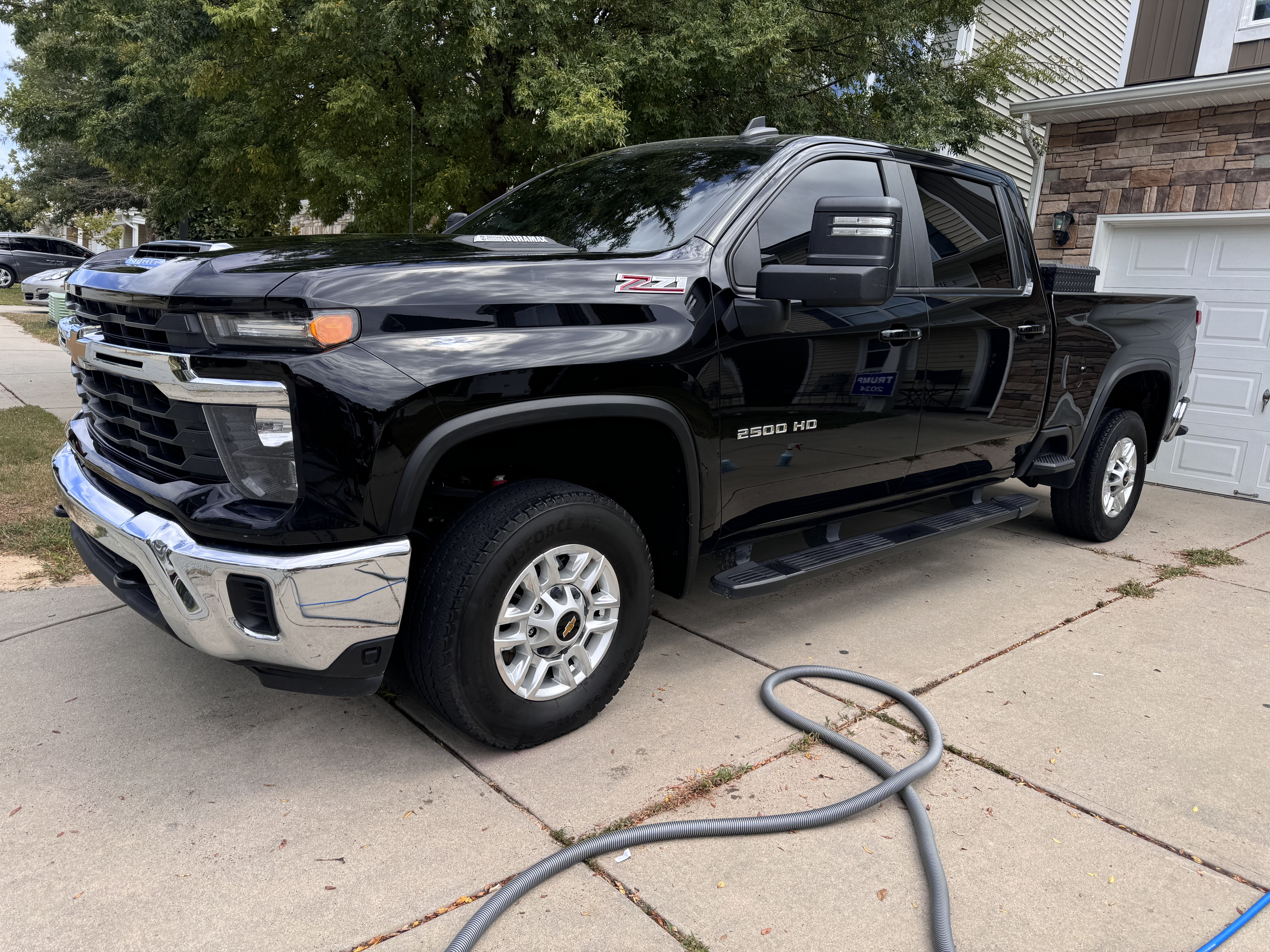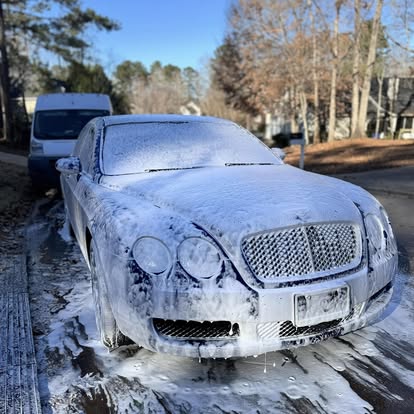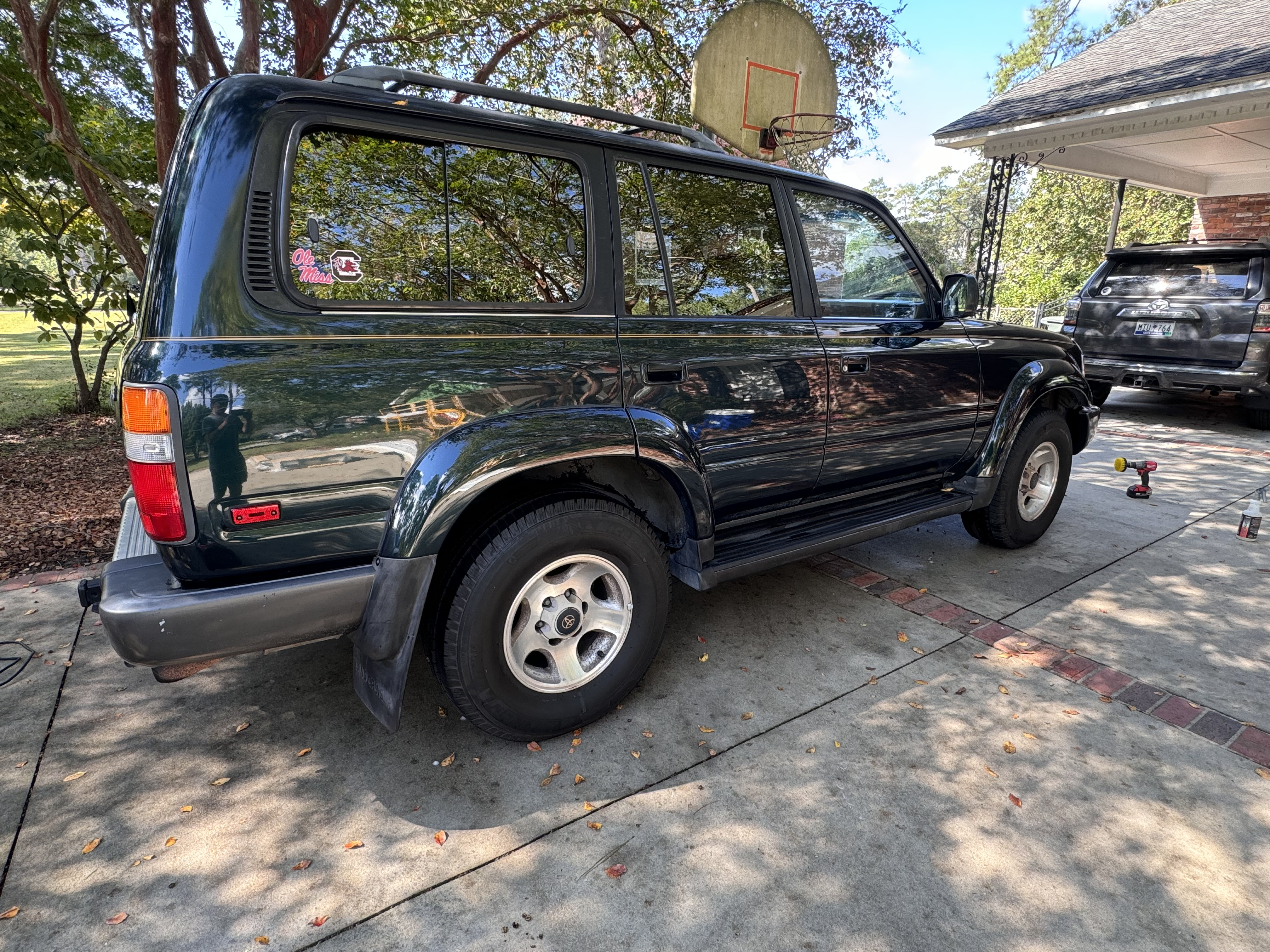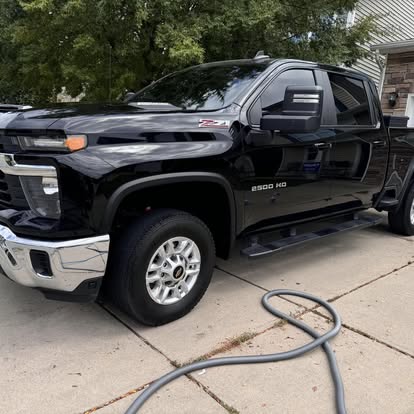How Long Does Ceramic Coating Last in South Carolina?
One of the most common questions we hear from vehicle owners considering ceramic coating is: "How long will it actually last?" It's a fair question—ceramic coating represents a significant investment, and you deserve to know exactly what kind of longevity to expect, especially in South Carolina's unique climate conditions.
The answer isn't as simple as a single number, because ceramic coating longevity depends on multiple factors including product quality, application expertise, environmental conditions, and most importantly, how well you maintain it. In this comprehensive guide, we'll explore everything that affects ceramic coating lifespan in South Carolina and provide expert tips to maximize your investment.
What is the Expected Lifespan of Ceramic Coating?
Professional-grade car ceramic coating typically lasts between 3-7+ years when properly maintained. However, this range varies significantly based on several key factors:
Entry-Level Coatings (2-3 Years)
Consumer-grade ceramic coatings available at auto parts stores and entry-level professional products typically last 2-3 years. These contain lower concentrations of active ingredients (SiO2) and don't bond as strongly to your paint. While more affordable, they require more frequent reapplication.
Mid-Range Professional Coatings (3-5 Years)
Quality professional ceramic coatings from reputable manufacturers typically last 3-5 years with proper maintenance. These products contain higher concentrations of silicon dioxide and form stronger molecular bonds with your paint, providing better durability and performance throughout their lifespan.
Premium Coatings (5-7+ Years)
Top-tier professional ceramic coatings can last 5-7 years or longer when maintained according to manufacturer specifications. These advanced formulations often include graphene, silicon carbide, or other advanced additives that enhance durability, hardness, and longevity. Some manufacturers even offer limited "lifetime" warranties with regular maintenance requirements.
The South Carolina Climate Factor
It's important to understand that South Carolina's climate presents specific challenges that can affect ceramic coating longevity. Our intense UV exposure, high humidity, frequent temperature fluctuations, and seasonal weather patterns all impact how long your coating performs at its peak. Let's explore these factors in detail.
Factors Affecting Ceramic Coating Longevity in South Carolina
1. UV Radiation and Sun Exposure
South Carolina receives intense ultraviolet radiation year-round, with summer months seeing particularly brutal sun exposure. UV rays gradually break down the molecular structure of ceramic coatings over time, reducing their effectiveness.
Impact: Vehicles regularly parked outdoors in direct sunlight may see 20-30% reduced coating lifespan compared to garage-kept vehicles.
Protection Strategy: Park in covered areas when possible, use ceramic coating with strong UV inhibitors, and apply ceramic boost sprays every 3-4 months to provide additional UV protection layers.
2. Heat and Temperature Extremes
Columbia SC regularly experiences temperatures exceeding 95°F in summer, with surface temperatures on dark-colored vehicles reaching 150°F or higher. These temperature extremes accelerate chemical breakdown and can cause premature coating degradation.
Impact: Consistent exposure to extreme heat can reduce coating lifespan by 15-25% if not properly maintained.
Protection Strategy: Regular maintenance washes remove contaminants that absorb heat, ceramic boost sprays provide added thermal protection, and parking in shade during peak heat hours helps preserve coating integrity.
3. Humidity and Moisture
South Carolina's high humidity levels (often 70-90%) create constant moisture exposure. While ceramic coating is hydrophobic, prolonged humidity exposure combined with contaminants can gradually diminish performance.
Impact: Humidity itself causes minimal damage, but it creates conditions where mold, mildew, and water spots can form more easily, potentially etching into the coating if not promptly removed.
Protection Strategy: Regular washing (every 2 weeks during humid months), immediate removal of water spots, and periodic use of ceramic detail sprays maintain hydrophobic properties.
4. Acid Rain and Environmental Fallout
Industrial areas, proximity to the coast, and agricultural activities can introduce acidic contaminants into the air. When these combine with rain, they create mild acid rain that can etch into surfaces over time.
Impact: Acid rain and fallout can reduce coating effectiveness by 10-20% if vehicles aren't washed regularly after rain events.
Protection Strategy: Wash your vehicle within 48 hours of rain events, especially after extended dry periods when atmospheric contaminants have accumulated.
5. Pollen and Organic Contaminants
South Carolina's long pollen season (February-June) subjects vehicles to heavy pollen deposits. Tree sap, bird droppings, and bug splatter are also prevalent. These organic contaminants contain acids that can etch into ceramic coating if left unattended.
Impact: Organic contaminants left on the coating for more than 48-72 hours can cause permanent etching, reducing overall coating performance.
Protection Strategy: Immediately remove bird droppings and tree sap using quick detailer spray. Wash vehicle bi-weekly during pollen season to prevent buildup.
6. Washing Frequency and Technique
How often and how you wash your vehicle dramatically affects ceramic coating longevity. Proper washing technique preserves the coating, while harsh methods accelerate wear.
Impact: Automatic car washes with harsh brushes can reduce coating lifespan by 40-50%. Infrequent washing (monthly or less) reduces longevity by 25-35%.
Protection Strategy: Hand wash every 2 weeks using pH-neutral soap and the two-bucket method. Never use automatic brush washes. Consider touchless washes as an acceptable alternative when hand washing isn't possible.
7. Product Quality and Application
Not all ceramic coatings are created equal. Product quality and professional application technique significantly impact longevity.
Impact: Professional-grade coatings properly applied last 2-3x longer than consumer-grade DIY applications.
Protection Strategy: Invest in professional-grade ceramic coating applied by certified technicians who follow proper preparation and application protocols.
Maintenance Requirements to Maximize Longevity
Following these maintenance guidelines ensures your ceramic coating reaches or exceeds its expected lifespan:
Regular Washing (Every 2 Weeks)
- Use pH-neutral car soap specifically designed for ceramic coatings
- Employ the two-bucket method with grit guards
- Use high-quality microfiber wash mitts, never sponges or brushes
- Rinse thoroughly before washing to remove loose debris
- Dry with plush microfiber towels or forced air to prevent water spots
Immediate Contaminant Removal
- Remove bird droppings, tree sap, and bug splatter within 24-48 hours
- Use ceramic-safe quick detailer spray to safely lift contaminants
- Never scrape or aggressively scrub—soak and gently wipe
- Address water spots immediately using distilled water rinse or spot remover
Ceramic Boost Applications (Every 3-6 Months)
- Apply ceramic boost spray or topper products quarterly
- These products refresh hydrophobic properties and add UV protection
- Takes only 30-45 minutes and dramatically extends coating life
- Some professional services offer boost maintenance packages
Professional Inspections (Annually)
- Have your coating professionally inspected once per year
- Technicians can identify areas needing attention or spot treatment
- Professional decontamination removes embedded particles regular washing misses
- Early detection of coating degradation allows for preventive action
What to AVOID
- Automatic car washes: Harsh brushes and strong chemicals damage coating
- Harsh chemicals: Avoid wheel cleaners, degreasers, or soaps with high pH on coated surfaces
- Abrasive tools: Never use stiff brushes, rough towels, or abrasive compounds
- Neglect: Allowing contaminants to sit for extended periods causes permanent damage
- DIY correction: If coating is damaged, consult professionals rather than attempting home fixes
Signs Your Ceramic Coating Needs Attention
Watch for these indicators that your ceramic coating may need professional maintenance or reapplication:
- Reduced water beading: Water no longer forms tight beads or sheets off quickly
- Water spots form easily: Mineral deposits stick to the surface more readily
- Dirt adheres more strongly: Contaminants require more effort to remove during washing
- Diminished gloss: Surface appears duller than when freshly coated
- Inconsistent appearance: Some areas look great while others appear degraded
- Visible etching or staining: Contaminants have penetrated the coating layer
If you notice any of these signs, contact your ceramic coating professional for assessment. Often, a thorough decontamination and boost application can restore performance without requiring full reapplication.
Cost-Benefit Analysis: Longevity vs. Value
Understanding the cost-per-year of ceramic coating helps put the investment in perspective:
Entry-Level Coating
$1,000 investment ÷ 3 years = $333/year
Maintenance: ~$100/year in boost products
Total: $433/year
Premium Coating
$2,500 investment ÷ 6 years = $417/year
Maintenance: ~$150/year in professional boost services
Total: $567/year
Comparison to Traditional Methods
Professional detailing + waxing: $150-200 every 3 months = $600-800/year
Results: Inferior protection, more frequent service, higher annual cost
Premium ceramic coating not only provides superior protection but actually costs less annually than traditional methods while delivering dramatically better results.
Conclusion: Maximizing Your Ceramic Coating Investment in South Carolina
Professional ceramic coating can absolutely last 5-7+ years in South Carolina's challenging climate when you choose quality products, work with skilled applicators, and commit to proper maintenance. While our intense sun, heat, and humidity present unique challenges, following the guidelines in this article ensures your coating performs at its peak throughout its entire lifespan.
The key factors for maximum longevity are:
- Investing in professional-grade coating from certified applicators
- Regular bi-weekly washing with proper technique and products
- Immediate removal of contaminants
- Quarterly ceramic boost applications
- Annual professional inspections and decontamination
With proper care, your ceramic coating will continue protecting your vehicle's paint, maintaining that stunning gloss, and making maintenance easier for many years to come—all while preserving your vehicle's value and appearance far better than any traditional protection method.
Ready to invest in long-lasting ceramic coating protection? Contact us today to discuss which coating system is right for your vehicle and driving conditions. We'll create a customized protection plan that maximizes longevity while fitting your budget and maintenance preferences. Let's keep your vehicle looking showroom fresh for years to come!



